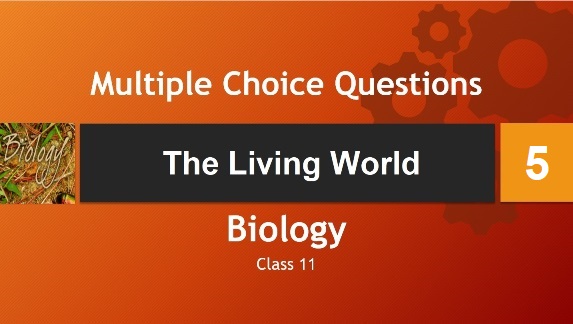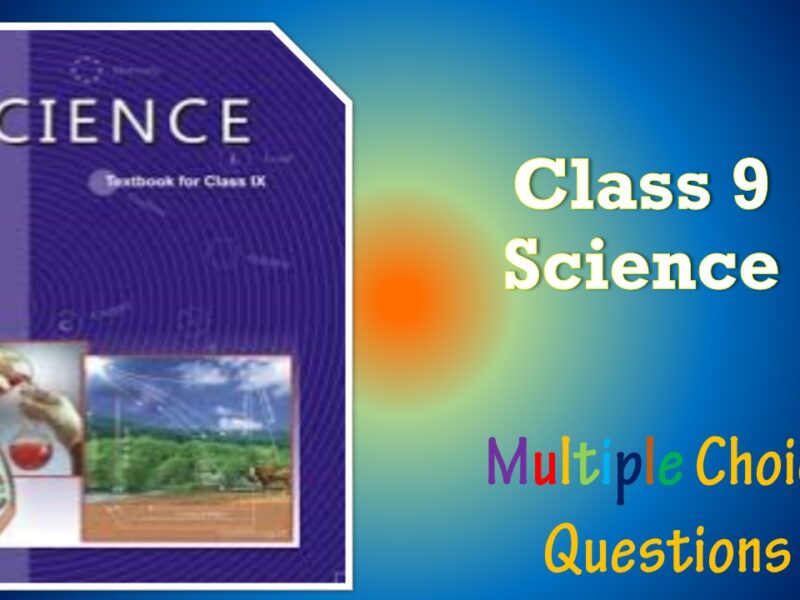CBSE Class 11 Chemistry Chapter 1 Biology The Living World Multiple Choice Questions with Answers. MCQ Questions Class 11 Biology The Living World with Answers was Prepared Based on Latest Exam Pattern. Students can solve NCERT Class 11 Biology The Living World MCQs with Answers to know their preparation level.
Students who are searching for NCERT MCQ Questions for Class 11 Biology The Living World with Answers are compiled here to get good practice on all fundamentals. Know your preparation level on MCQ Questions for Class 11 Biology with Answers. You can also verify your answers from our provided MCQ Class 11 Biology The Living World with Answers. So, ace up your preparation with MCQ of Chapter 1 Biology Objective Questions.
MCQ Questions Class 11 Biology The Living World with Answers - Set - 5
Question 1:
Question. Sequence of taxonomic categories is
(a) class–phylum–tribe–order–family–genus– species
(b) division–class–family–tribe–order–genus–species
(c) division–class–order–family–tribe–genus–species.
(d) phylum–order–class–tribe–family–genus–species.
Correct Answer – (C)
Question 2 :
Question. ‘Taxon’ is the unit of a group of
(a) order
(b) taxonomy
(c) species
(d) genes.
Correct Answer – (B)
Question 3 :
Question. Scientific name of Mango plant is Mangifera indica (Linn.) Santapau. In the above name Santapau refers to
(a) Variety of Mango
(b) A taxonomist who proposed the present nomenclature in honour of Linnaeus
(c) A scientist who for the first time described Mango plant
(d) A scientist who changed the name proposed by Linnaeus and proposed present name
Correct Answer – (D)
Question 4 :
Question. Which one of the following animals is correctly matched with its particular taxonomic category?
(a) Tiger – tigris, species
(b) Cuttlefish – mollusca, class
(c) Humans – primata, family
(d) Housefly – Musca, order
Correct Answer – (A)
Question 5 :
Question. Which one of the following organisms is scientifically correctly named, correctly printed according to the International Rules of Nomenclature and correctly described?
(a) Musca domestica – the common house lizard, a reptile
(b) Plasmodium falciparum – a protozoan pathogen causing the most serious type of malaria.
(c) Felis tigris – the Indian tiger, well protected in Gir forests.
(d) E.coli – full name Entamoeba coli, a commonly occurring bacterium in human intestine.
Correct Answer – (B)
MCQ Questions Class 11 Biology The Living World with Answers
Question 6 :
Question. The classification of Linnaeus was mainly based on
(a) Sepals
(b) Carpels
(c) Petals
(d) Stamens
Correct Answer – (D)
Question 7 :
Question. Which of the following is less general in characters as compared to genus?
(a) Species
(b) Division
(c) Class
(d) Family
Correct Answer – (A)
Question 8 :
Question. Species are considered as
(a) real basic units of classification
(b) the lowest units of classification
(c) artificial concept of human mind which cannot be defined in absolute terms
(d) real units of classification devised by taxonomists.
Correct Answer – (A)
Question 9 :
Question. The system of classification based on evolutionary and genetic relationships among organisms, ignoring the morphological similarities or differences, is called
(a) cladistics
(b) phenetics
(c) classical systematics
(d) new systematics
Correct Answer – (A)
Question 10 :
Question: What is true for individuals of same species?
a) Interbreeding
b) Live in same habitat
c) Live in same niche
d) None of these
Correct Answer – (A)
- NCERT Solutions Class 11 Chemistry Chapter 1 : Some Basic Concepts of Chemistry
- NCERT Solutions Class 11 Chemistry Chapter 2 : Structure Of The Atom
- NCERT Solutions Class 11 Chemistry Chapter 3 : Classification of Elements and Periodicity in Properties
- NCERT Solutions Class 11 Chemistry Chapter 4 : Chemical Bonding and Molecular Structure
- NCERT Solutions Class 11 Chemistry Chapter 5 : States of Matter
- NCERT Solutions Class 11 Chemistry Chapter 6 : Thermodynamics
- NCERT Solutions Class 11 Chemistry Chapter 7 : Equilibrium
- NCERT Solutions Class 11 Chemistry Chapter 8 : Redox Reactions
- NCERT Solutions Class 11 Chemistry Chapter 9 : Hydrogen
- NCERT Solutions Class 11 Chemistry Chapter 10 : The s-Block Elements
- NCERT Solutions Class 11 Chemistry Chapter 11 : The p-Block Elements
- NCERT Solutions Class 11 Chemistry Chapter 12 : Organic Chemistry: Some Basic Principles and Techniques
- NCERT Solutions Class 11 Chemistry Chapter 13 : Hydrocarbons
- NCERT Solutions Class 11 Chemistry Chapter 14 : Environmental Chemistry




